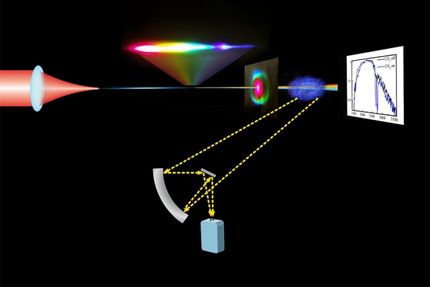PFAS in honey bees: Insects enable pollutant monitoring in the environment
Advertisement
PFAS - perfluorinated and polyfluorinated alkyl substances - have increasingly come into focus in recent years as so-called "eternity chemicals". These artificially produced substances are used in the production of many everyday products. They are harmful to the environment and health, difficult to break down and accumulate everywhere, in flora, fauna and also in us humans. Researchers at the University of Graz have now used honeybees to investigate the occurrence of PFAS at different times and in different areas of land use. The study shows that bees and the pollen they collect are ideal for monitoring environmental toxins. The insects absorb the pollutants and allow conclusions to be drawn about their spatial and seasonal distribution.
"PFAS was detected in quantifiable quantities in almost all of the bees and pollen we examined," reports Jörg Feldmann. The chemist from the University of Graz has also been on the trail of environmental toxins in wild boar and whale brains. "When it comes to monitoring pollutants, however, bees have a head start on these mammals. Because they only live for a few weeks, the chemicals they ingest cannot accumulate in their bodies for long periods of time. This means that the measured concentrations always provide up-to-date information on the occurrence of environmental toxins," explains biologist Robert Brodschneider.
For their most recent study on PFAS in bees and pollen, the researchers collected data from April to August at six locations in Upper Austria, Lower Austria and Styria with different land use, in urban and semi-urban, rural and agricultural areas. Temporal and spatial differences were remarkable. Site-specific PFAS patterns indicated potential sources of contamination, such as the use of pesticides containing fluorine. There was no direct correlation with the type of land use.
"In total, we detected nine different PFAS in 90 samples," says Viktoria Müller, environmental chemist at the University of Graz and the James Hutton Institute in Aberdeen/UK. "On average, bees in the hive had the highest sum of all concentrations, followed by forager bees and pollen," the researcher continues. Differences in the occurrence of PFAS between the sample types, especially between forager bees and hive bees, indicated different contact routes, such as uptake via pollen, particles from the air or contaminated surfaces. "We were able to show that forager bees introduce PFAS into the hive either via their bodies or via nectar and pollen," says Müller.
"Knowing about seasonal and local differences in PFAS concentrations is an important prerequisite for creating pollution maps for certain areas," says Feldmann, explaining the significance of the study. Further research will have to clarify which factors are responsible for local and temporal fluctuations.
Note: This article has been translated using a computer system without human intervention. LUMITOS offers these automatic translations to present a wider range of current news. Since this article has been translated with automatic translation, it is possible that it contains errors in vocabulary, syntax or grammar. The original article in German can be found here.
























































